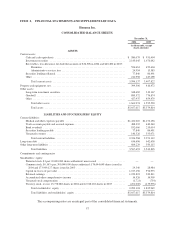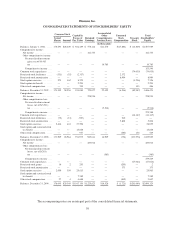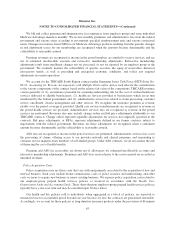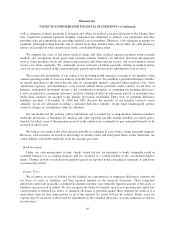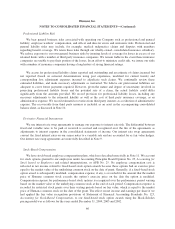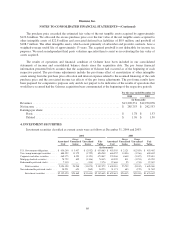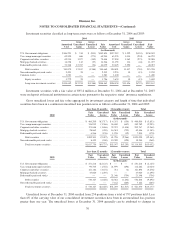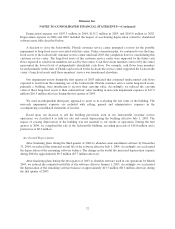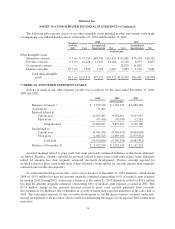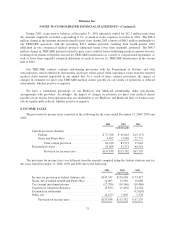Humana 2004 Annual Report Download - page 76
Download and view the complete annual report
Please find page 76 of the 2004 Humana annual report below. You can navigate through the pages in the report by either clicking on the pages listed below, or by using the keyword search tool below to find specific information within the annual report.Humana Inc.
NOTES TO CONSOLIDATED FINANCIAL STATEMENTS—(Continued)
Professional Liability Risk
We bear general business risks associated with operating our Company such as professional and general
liability, employee workers’ compensation, and officer and director errors and omissions risks. Professional and
general liability risks may include, for example, medical malpractice claims and disputes with members
regarding benefit coverage. We retain these risks through our wholly-owned, consolidated insurance subsidiary.
We reduce exposure to our own general business risks by insuring levels of coverage for losses in excess of our
retained limits with a number of third party insurance companies. We remain liable in the event these insurance
companies are unable to pay their portion of the losses. In an effort to minimize credit risk, we insure our risks
with a number of insurance companies having a long history of strong financial ratings.
We accrue for professional liability claims reported and outstanding and an estimate of claims incurred but
not reported (based on actuarial determinations using past experience, modified for current trends) and
corresponding loss adjustment expenses incurred to adjudicate such claims. We continually review these
estimated liabilities, and make necessary adjustments as warranted. We believe our professional liabilities are
adequate to cover future payments required. However, given the nature and degree of uncertainty involved in
projecting professional liability losses and the potential size of a claim, the actual liability could differ
significantly from the amounts provided. We record provision for professional liability losses, including any
necessary adjustments to the estimated liability as well as the cost of third party insurance coverage, as an
administrative expense. We record estimated recoveries from third party insurers as a reduction of administrative
expense. The recoverable from third party insurers is included as an asset in the accompanying consolidated
balance sheet, as discussed in Note 10.
Derivative Financial Instruments
We use interest rate swap agreements to manage our exposure to interest rate risk. The differential between
fixed and variable rates to be paid or received is accrued and recognized over the life of the agreements as
adjustments to interest expense in the consolidated statements of income. Our interest rate swap agreements
convert the fixed interest rates on our senior notes to a variable rate and are accounted for as fair value hedges.
Our interest rate swap agreements are more fully described in Note 9.
Stock-Based Compensation
We have stock-based employee compensation plans, which are described more fully in Note 11. We account
for stock options granted to our employees under Accounting Principles Board Opinion No. 25, Accounting for
Stock Issued to Employees and related interpretations, or APB No. 25. No employee compensation cost is
reflected in net income related to fixed-based stock option awards because these options had an exercise price
equal to the market value of the underlying common stock on the date of grant. Generally, if a fixed-based stock
option award is subsequently modified, compensation expense, if any, is recorded for the amount that the market
price of Humana common stock exceeds the option’s exercise price on the date the option is modified.
Compensation expense for performance-based stock options is recognized over the performance period varying
based on the market value of the underlying common stock at the end of each period. Compensation expense is
recorded for restricted stock grants over their vesting periods based on fair value, which is equal to the market
price of Humana common stock on the date of the grant. The effect on net income and earnings per share if we
had applied the fair value recognition provisions of Statement of Financial Accounting Standards No. 123,
Accounting for Stock-Based Compensation, to our fixed-based stock option awards using the Black-Scholes
pricing model was as follows for the years ended December 31, 2004, 2003 and 2002.
66



